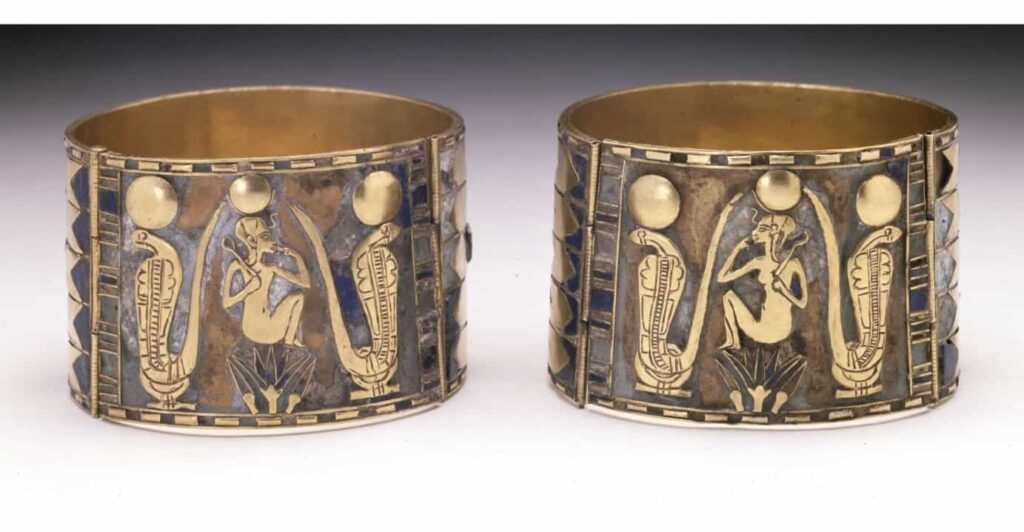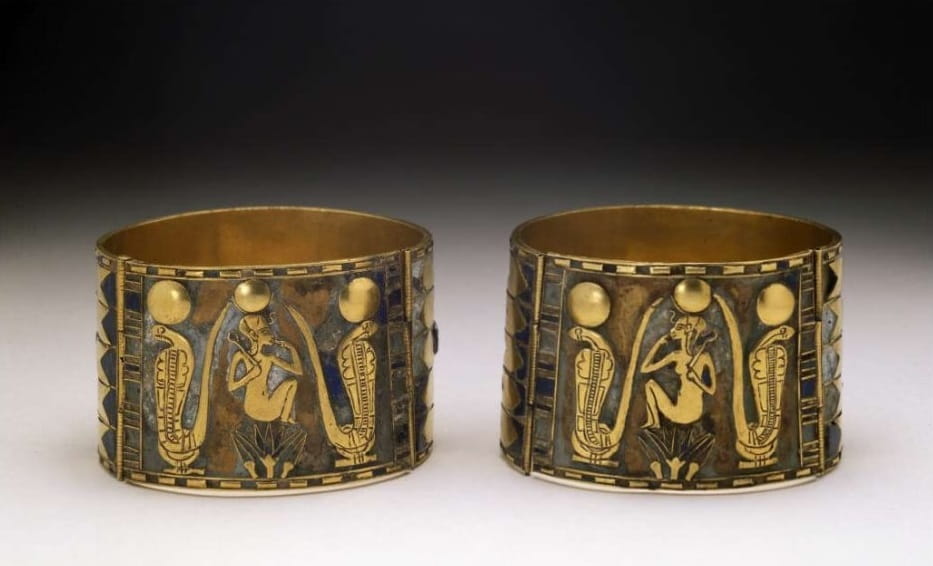The Prince Nemareth Bracelet is a piece of jewelry dated approximately to the year 940 BC and is part of ancient Egyptian art. The year of its discovery is unknown, but it is known to have been discovered during archaeological excavations in Sa el Ha-gar, also known as Sais or Sau.
In ancient times, this location was the capital of the “nome V” (territorial subdivision) of Lower Egypt, located west of the Nile River delta. In 1850, it was purchased by Charles Augustus Murray on behalf of the British Museum in London, United Kingdom, where it became part of its Egyptian antiquities collection.
The bracelet measures 4.30 cm in height, 6 cm in width, 6.30 cm in depth, and weighs 71 grams. It is made of gold and lapis lazuli using casting and inlay techniques. The exterior is decorated with geometric motifs and a scene depicting a child-god, while the inside features an inscription in hieroglyphic writing.
The depiction on the outside shows the god represented as a naked male child in profile, with a long lock of hair, finger in mouth, uraeus on forehead, and crescent moon and disk on his head.
He is surrounded by two upright cobras with the solar disc on their heads, representing the goddess Wadjet, the protective goddess of Upper and Lower Egypt. This representation is known as the Ureo. The god is also shown on a blue lotus flower, a symbol of creation, birth, and rebirth.
On the inside, there is a horizontal hieroglyphic inscription in the center, displaying the titles of Prince Nemareth. Researchers believe that the god depicted may have been Harpocrates, the god of silence, the sun at dawn, and constant renewal.
It is believed by researchers that the Prince Nemareth’s bracelet may have originally been inlaid with lapis lazuli. Today, the bracelet is on display at the British Museum in London, United Kingdom.









